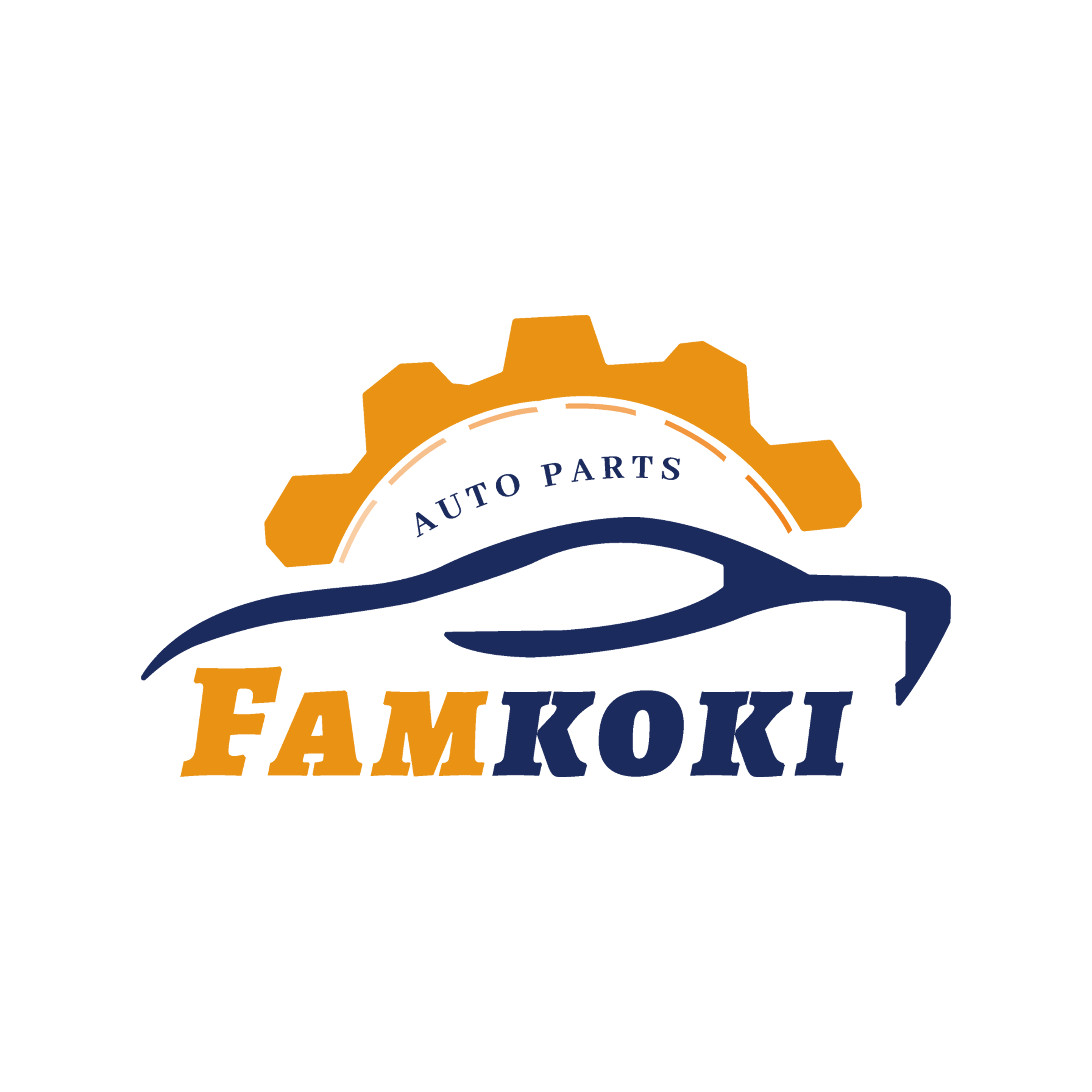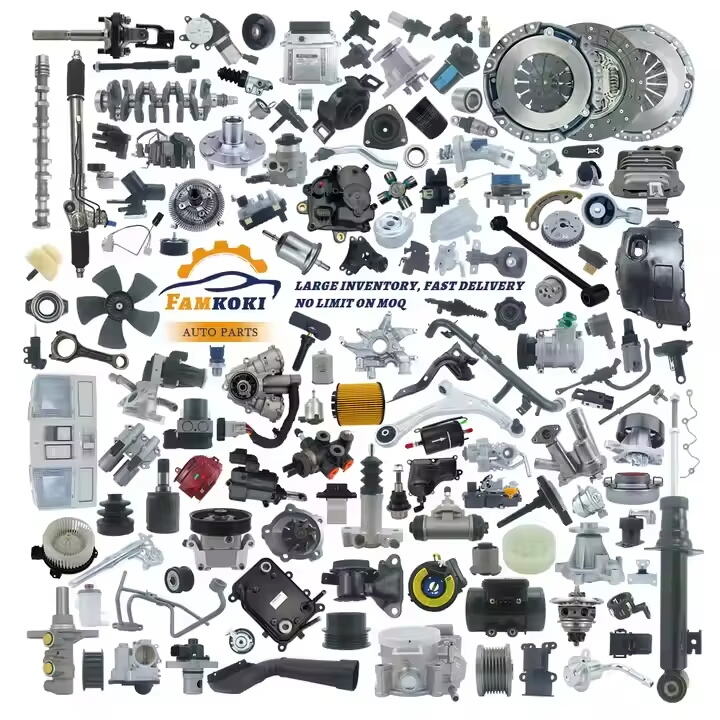Understanding Auto Part Failure Risks
Impact of Defective Components on Vehicle Safety
Signature unsafe auto parts risk the integrity of vital areas of the vehicle such as braking, steering and vehicle control. According to the National Highway Traffic Safety Administration (NHTSA), faulty parts cause many accidents every year. Nowhere is the risk of a catastrophic event higher than when there are failures in the critical systems such as brakes and tires. The results provide evidence that defects in the recalling components in the car have far more accidents occur, showing a growing demand for strong safety regulation and quality management systems in automobile industry.
The danger of these risks is emphasized in systems where failure can be catastrophic. A brake could malfunction and the vehicle not be able to stop, or a tire couldn’t be properly equipped with the tire blows out on a highway at high speeds. That is because defective auto parts are frequently “concealed defects” and not something that would be readily apparent to drivers, making them even more dangerous, according to recent research. This makes it of the utmost importance to focus on good manufacturing practices and solid controls to assure that vehicle safety is never compromised.
Financial Consequences of Part Failures
The economic toll of busted auto parts can be vast, for car owners and the auto industry at large. The cost just for repairs can be up in the hundreds or thousands of dollars, depending on the particular part and degree of damage. This financial cost is accompanied by possible indemnification claims, which could arise from accidents caused by faulty parts. Yearly, the automotive industry loses out on billions of dollars because of warranty claims and recalls—a sobering reminder of the dire financial consequences of part failure.
What’s more, when parts fail, it isn’t just the cost of repair that accrues, it is also the widespread business disruption it can cause. For companies that maintain vehicle fleets, downtime for repairs results in lost income and operational downtime costs. These scenarios highlight the need for strict quality control as well as safety considerations. Regardless, regular upkeep and quick attention to recall announcements can help prevent this from happening and keep a car a moneymaker rather the moneysucker.
Common Causes of Auto Part Failure
Wear and Tear from Regular Operation
Normal wear and tear is unavoidable when it comes to auto parts and will degrade all your vehicle's critical systems, including the brakes, tires and belts. Wear and tear is one of the most common reasons for parts failure in cars, as proven by consumer reports. For example, there are significant Use-related Wear (which is internal) of brake pads and tires by continual friction and pavement, thereby reducing their life expectancy, thus requiring frequent checks and replacements in order to prevent failure. Leaving it unchecked can result in you driving in dangerous conditions that run the risk of damaging more parts of your vehicle; repair will only come at an even greater expense later on.
Poor Maintenance Practices
Failing to maintain the air compressor properly will possibly cause more incidents of unscheduled downtime and component failure. And according to the Automotive Industry Action Group (AIAG), regular maintenance can help to avoid these common issues and expand the life of automotive parts. Regular inspections and proactive interventions, such as oil changes and fluid checks, are essential. Neglecting regular maintenance on any given vehicle can cause small problems to become big, which usually takes vehicle owners by surprise, leaving them with hefty repair bills and all that downtime.
Overheating in Critical Systems
Overwarming is a serious problem, causing catastrophic failure of engine parts. Cooling system mismanagement is one of the commonly cited reasons in the automotive industry for overheating. The risks associated with these may be reduced with appropriate fluid management, such as monitoring and replacing coolant as needed. Overheating can damage an engine and cause total engine failure, causing costly car repairs and a reduction in vehicle reliability.
Corrosion from Environmental Exposure
Environmental conditions such as humidity, salt, and pollutants are a major factor in auto part corrosion, and this is especially true in areas with severe weather. Corrosion can make structural failure as research has demonstrated by itself, so ensuring safety is always necessary. For example, cleaning and coating them with solutions to prevent corrosion can slow these processes. Failure to account for environmental damage may lead to explorative parts, a decreased service life of the vehicle, and an unsafe condition to operate.
Manufacturing Defects and Design Flaws
A significant number of auto parts failures are caused by manufacturing errors and engineering failures. Studies have shown that such defects contribute to 20-25% of part quality failures, thus emphasizing the importance of quality control during the production process. Components may prematurely fail despite normal use and create serious safety hazards in the vehicle. This highlights the importance of stringent testing and compliance with industry standards in the manufacturing process to make auto parts reliable and durable.
Essential Preventive Maintenance Strategies
Implementing Scheduled Service Intervals
Regular service schedules are essential when it comes to preventing things like car part failure. If a homeowner is diligent about periodic maintenance, then it is far more likely that any issues will be caught before they become a big issue. Research has shown that vehicles that are serviced regularly on a well-maintained schedule fail 30 percent less than those that aren't properly taken care of. Routine appointments can quickly uncover, say, wear and tear, before further damage sets in and becomes a more expensive fix, ultimately extending the life of the vehicle.
Fluid Monitoring and Replacement Protocols
Consistent maintenance of the working fluid is an important strategy to avoid wear and overheating in vehicular systems. Inspecting and changing of fluids has become so important that many of the fluids are being checked whenever you get an oil change but when you do it according to the manufacturer's recommendation it can help prevent catastrophic system failures such as over-heating which is a very common problem that happens with engines. Vehicle specialists advocate an effective fluid change interval on the basis of the automobile’s make and model to follow so that the grades of the performance continue to satisfy. Adhering to these guidelines protects major components of an auto, such as the engine and cooling system, preventing breakdowns caused by low fluid levels.
Temperature Regulation Techniques
Methods for regulating temperature It is necessary to have methods for controlling and maintaining the temperature so as not to overheat or wear out the auto parts too early. Powerful cooling solutions for the most vital parts of the system help balance modestly-sized systems with the powerful heat that those systems generate, reducing your downtime. Evidence shows that measures to control temperatures, like better ventilation and easily operated cooling, are important to maintain vehicle functionality. Reducing Overheating: These vehicles often depend on their engines to produce a lot of energy and running them hard for long periods of time can cause serious problems.
Protective Coatings Against Rust
Protective coatings for rust are a smart way to extend the life of vulnerable items on your vehicles. Their purpose is to keep things from rusting by providing a physical and mechanical barrier to prevent exposure to moisture and environmental conditions that cause rust. With more than 500,000 vehicles already coated, studies find those vehicles have had a dramatic decrease in corrosion-induced failures. Owners, by doing so, will be able to mitigate the deleterious effects of the environment on their vehicles and prolong the life span of their auto parts.
Proper Handling and Storage Protocols
Climate-controlled storage solutions
Protecting vehicle parts in climate controlled settings will help keep them working properly. Temprature and humidity control reduce exposure which will reduce the risk of deterioration and corrosion of auto parts to make them lasting. "Required for protecting sensitive parts and semiconductor devices, the longevity of which can greatly benefit from consistent temperatures.
Correct installation procedures
Correct installation is critical to prevent vehicle damage. When you take into consideration industry standards and manufacturer recommendations, you can guarantee compatibility and increased reliability in automotive parts. Properly installed products are considered as replacement parts and will not void any warranty.
- Proper installation ensures compatibility and safety
- Adhering to standards enhances reliability
- Manufacturer guidelines prevent strain and damage
Moisture prevention methods
Steps such as using moisture prevention techniques are critical to preventing components from rust and wear. Methods like dehumidifying and proper air circulation can help protect metal auto parts. Mobile maintenance experts agree that these techniques are essential for the longevity of your most important systems. Moisture management is a proactive step for the durability and trustworthiness of automotive components.
- Use dehumidifiers and air circulators for moisture control
- Protect components from rust and corrosion
- Critical strategy for longevity of metal parts
Recognizing End-of-Life Part Symptoms
It's important to recognize signs of auto part deterioration so you can avoid part failure and replacement. Typical warning signs include abnormal sounds, sluggish operation, and visible wear and cause unsafe failures if it goes unchecked. — It has been found that vehicle owners who have knowledge of these end-of-life indications were able to save repair bills by replacing parts as and when they had become end of life. It's important for drivers to be informed about these warning signs for the safety and longevity of their vehicles.
High-Performance Component Benefits
Vehicle Parts – Replacing O.E. stock parts with high-performance parts are going to increase efficiency and safety. These are just some of the benefits of these things that many experts recommend as great upgrades for gasoline engines, resulting in better fuel mileage, tighter handling, and longer lasting wear and tear. While premium parts may cost more up front, they generally last longer and outperform more affordable components. This initial expense is frequently offset as soon as the maintenance and repair costs are minimized, as you'll read in many automotive reports.
OEM vs Aftermarket Part Considerations
This is where the source of parts (original equipment manufacturers and others) for vehicle repair or replacement play a role. OEM machines are thought of to be more dependable and compatible; however, they are at a higher cost. In contrast, forged parts can provide similar performance benefits for a fraction of the cost. Consumer reports reccommend first looking at these specific vehicle requirements and cost considerations to make well- informed decisions about part replacements. Knowing these choices is crucial for maintaining your vehicle up to date.
FAQ
What are the main causes of auto part failures?
Auto part failures can stem from wear and tear, poor maintenance, overheating, environmental exposure, and manufacturing defects.
How can I prevent auto part failures?
Routine maintenance, timely fluid changes, protective coatings against rust, and proper handling and storage can help prevent failures.
Are OEM parts better than aftermarket alternatives?
OEM parts generally offer higher reliability and compatibility, but quality aftermarket parts can provide comparable performance at lower costs. Consider your specific vehicle needs and budget when choosing between the two.
What symptoms indicate that an auto part is failing?
Common symptoms include unusual noises, reduced performance, and visible wear on the parts.
 EN
EN
 AR
AR
 FR
FR
 KO
KO
 PT
PT
 RU
RU
 ES
ES


